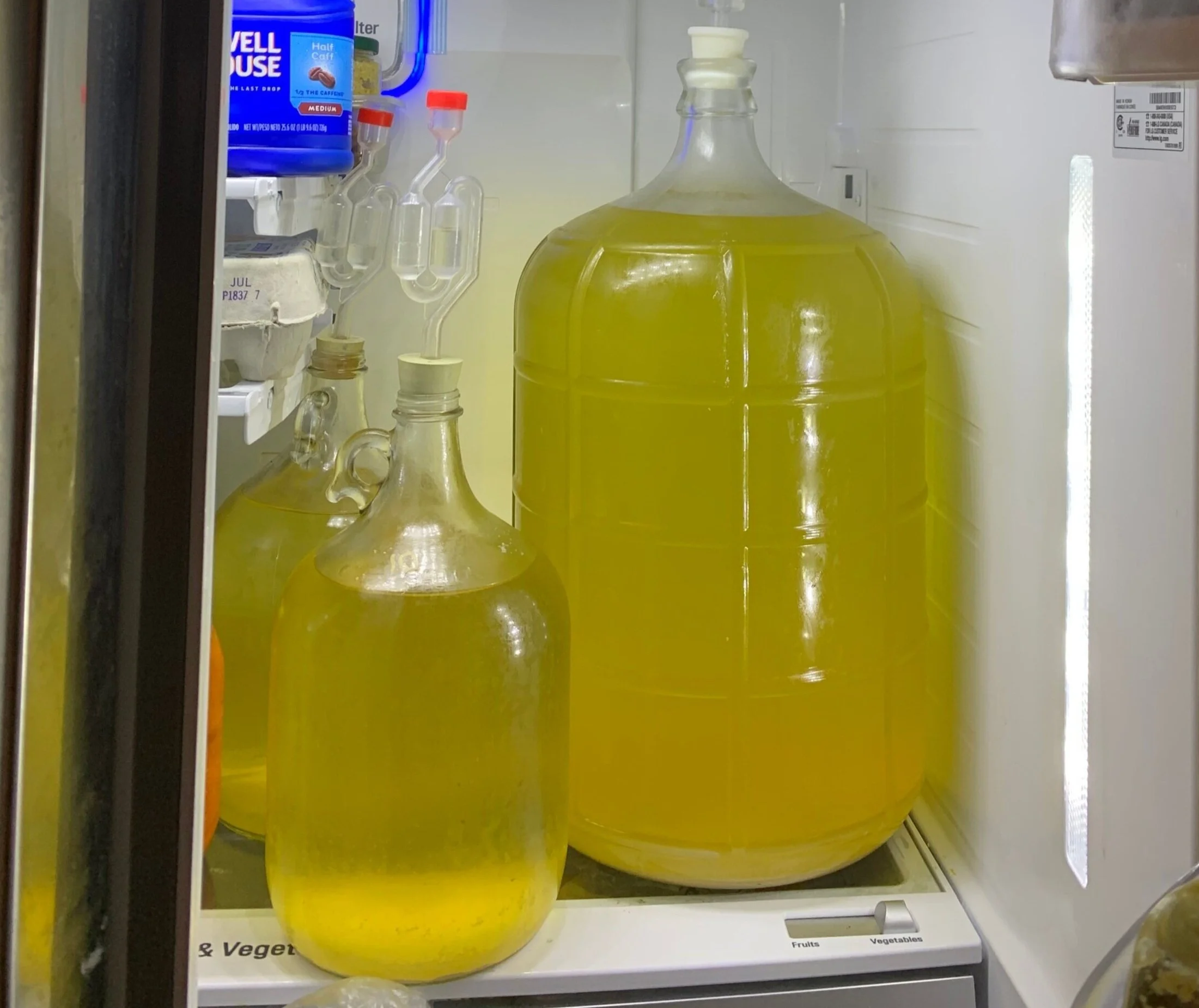Adventures with Chardonnay
I am a Chardonnay fan. As old fashioned and outdated as that may sound, I love a good buttery Chardonnay. Now that I have taken the first taste of my spring Chardonnay, I can quite honestly say, it was the most confusing batch of wine I have made to-date. The good thing about confusion is that it forces you to learn.
The “buttery” tastes of Chardonnay can come from two methods (that I know of). One is taking it through secondary or malolactic fermentation (MLF), and the second is letting the wine sit in oak for a short while. These are two very different processes.
MLF is the process that takes the sharper malic acid and softens it by changing it to lactic acid. Acid in wine makes the sides of your tongue tingle and causes your mouth to water. Oaking the wine does not really change the acid but does add flavor characteristics to the wine which disguise the sharper, acidic edges. This same thought process is what sommeliers do with food. Sweetness in some white wines can disguise the acidic feeling in of the wine in your mouth and will also go nicely with spicy foods, making the food and wine complementary to each other.
The other complicating factor of my Chardonnay process is that white wine needs to be cold stabilized. This means it has to sit in a cold place (about 40° F) for a few weeks. A month or two ago, I was sitting with wine that just completed primary fermentation, had not been sulfited, and needed cold stabilization (which I knew would stop MLF). I was not sure what to do.
I was invited to a wine tasting at my cousin’s house. During the tasting, her husband had a phone call from a local (commercial) winemaker. I took that opportunity to interrupt his phone call and throw a question at the winemaker. My question was, what should I do with the Chardonnay (in regard to MLF and cold stabilization)? I was not speaking with him directly, and that question has multiple curve balls in it, so the answer I got was a very basic, “Yes, and yes,” but no more detail than that. To me, it meant do both: pitch the malo and cold stabilize it.
I kicked off MLF in the two, 5-gallon bottles but not in the remainder of the 2-gallons of juice which was in two, 1-gallon bottles. Within two weeks from pitch, I removed shelves from both my refrigerators and moved the carboys and gallon bottles into the cold.
After a month in my refrigerators, I took the two, 1-gallon bottles to begin an experiment. I soaked the oak chips in a cup of warm water with a small amount of sulfite. After sulfiting and racking the two, 1-gallon bottles of wine, I added the oak chips. I was nervous about this process because you can easily over-oak wine which will ruin it. I only left the chips in for a day, then racked them again and bottled one of the gallons. Upon tasting, it was very good but did not have the buttery flavor that I love.
As of now, I have taken one of the 5-gallon bottles out of the refrigerator, brought it to room temperature, and stirred the lees from the bottom to see if I could stimulate MLF to start again. I will most likely sulfite and then add oak to the other 5-gallon bottle and let it sit a bit longer before bottling. The lessons learned in this adventure may be to just go buy a great Chardonnay and get back to making red wine! I will know more in a week or so.




